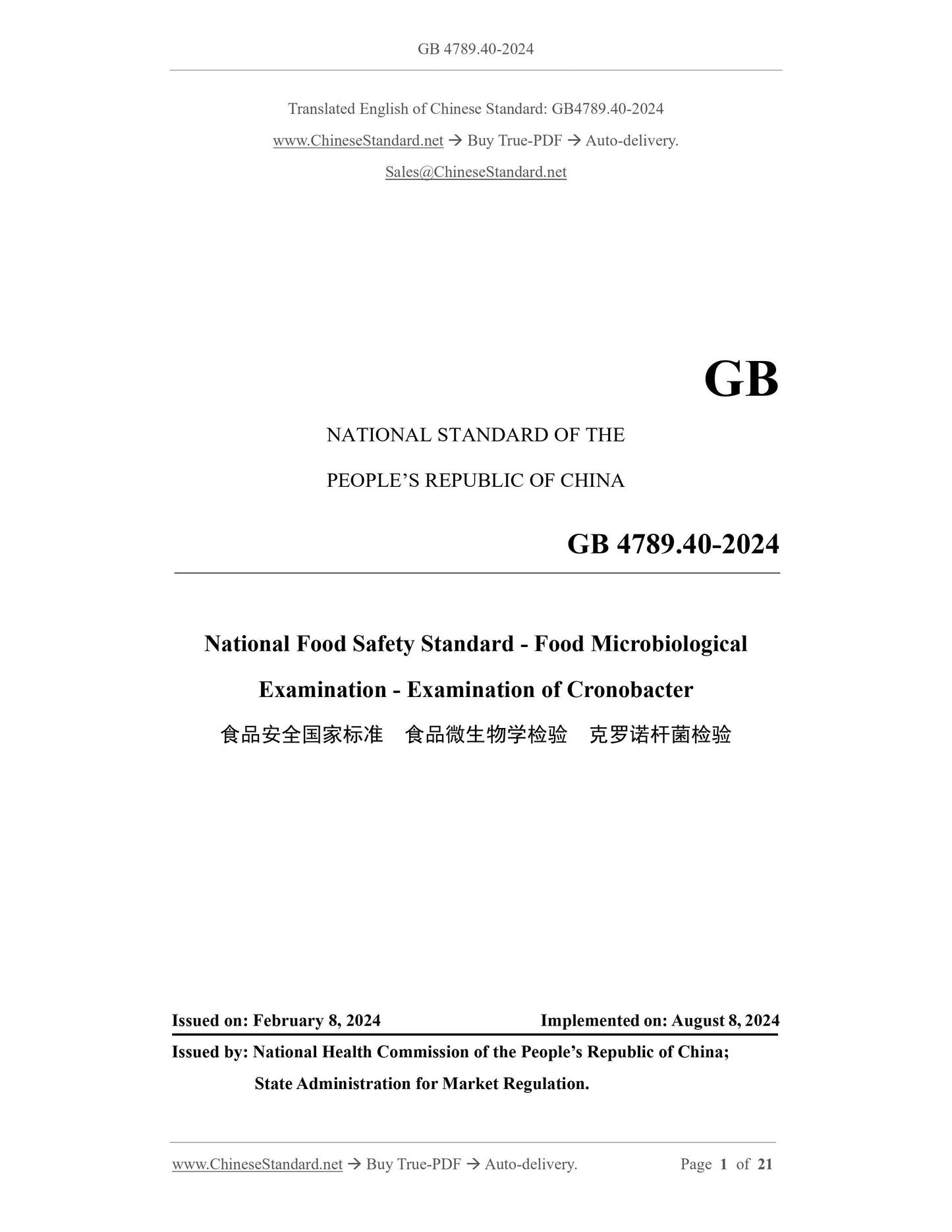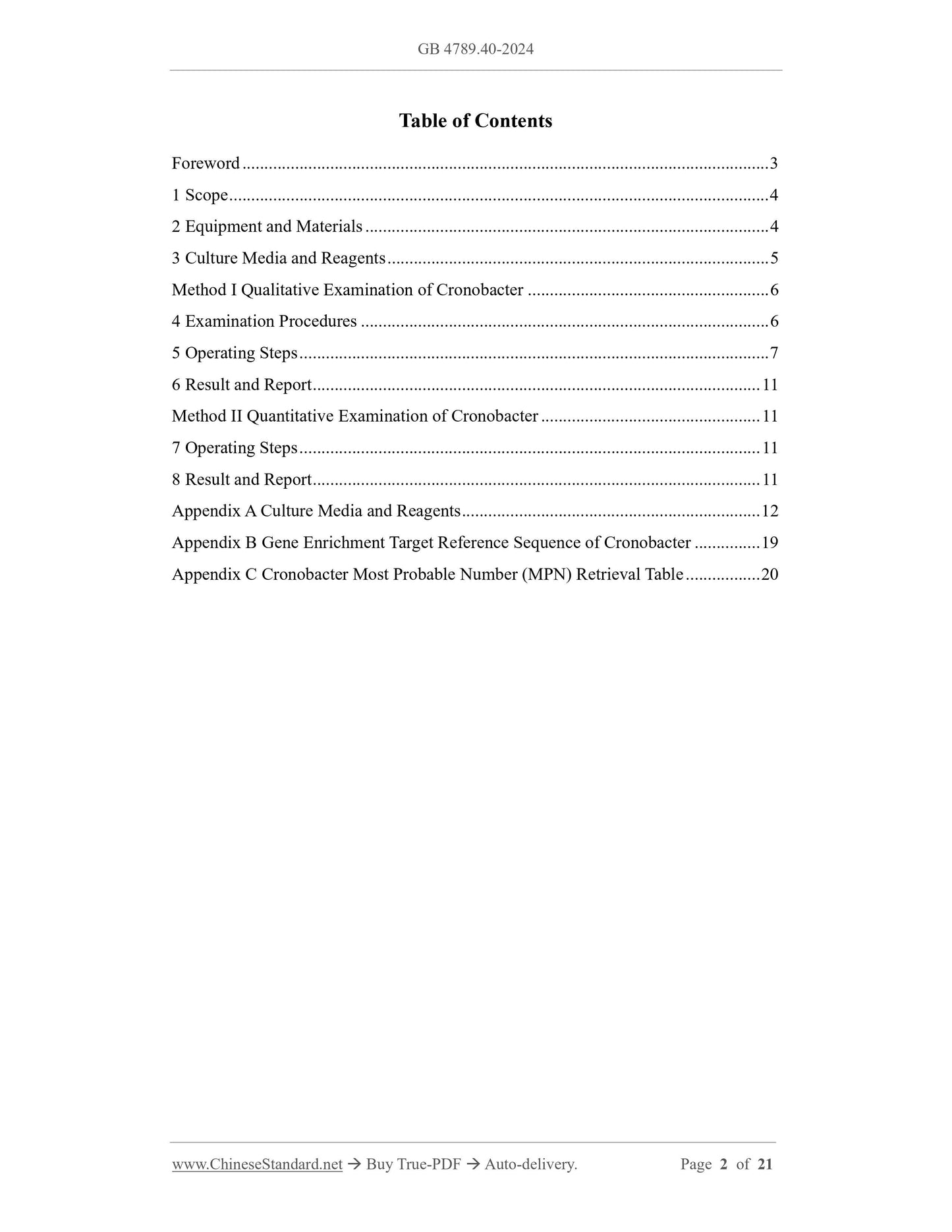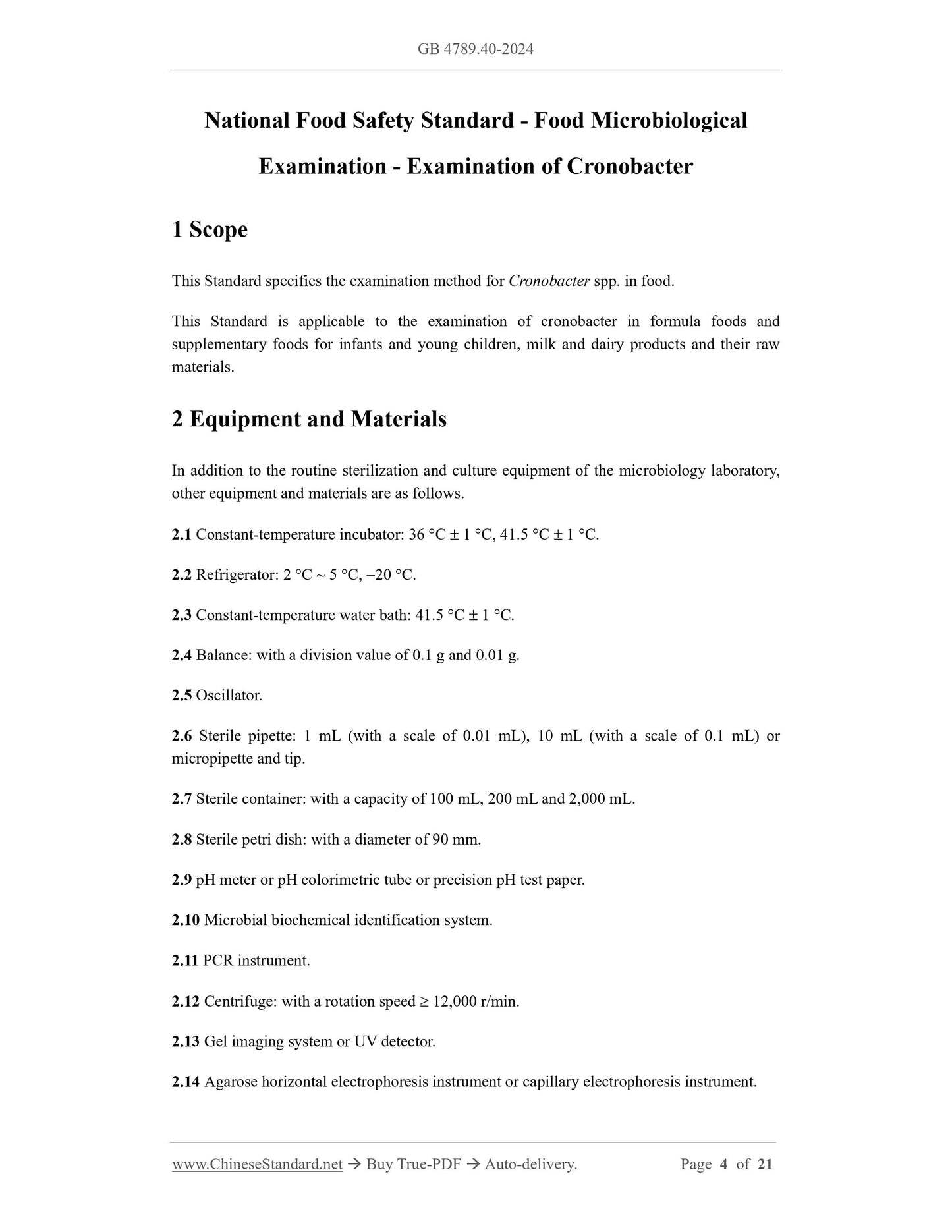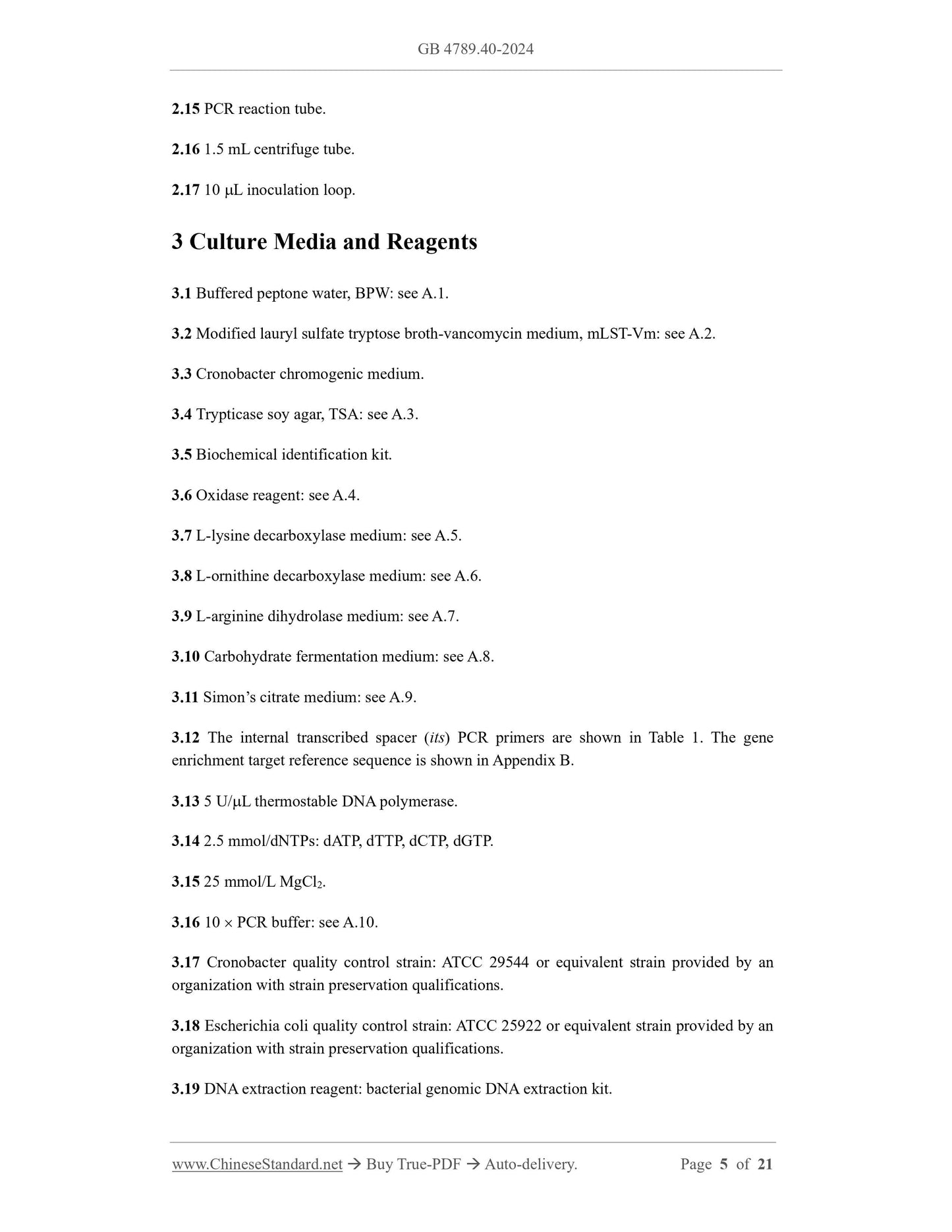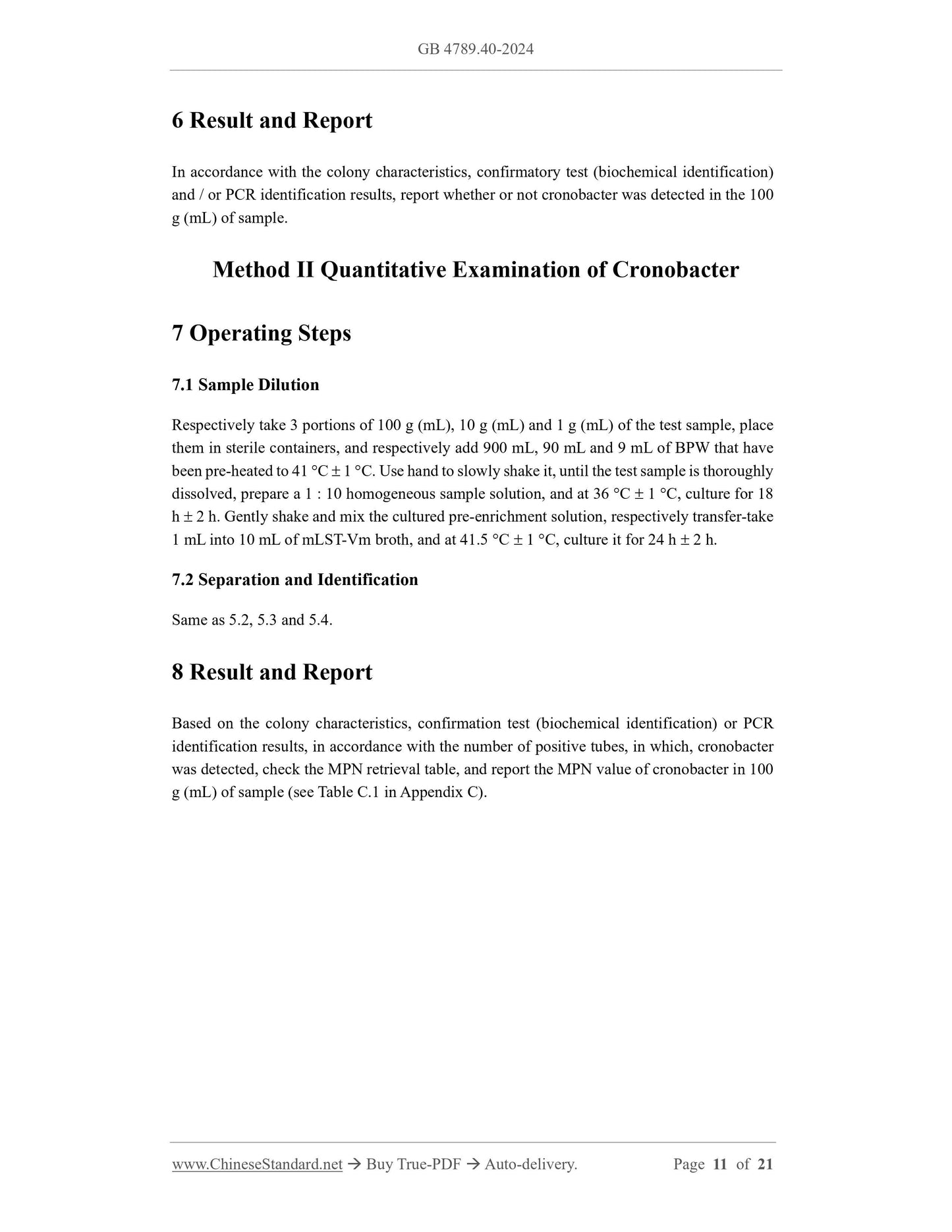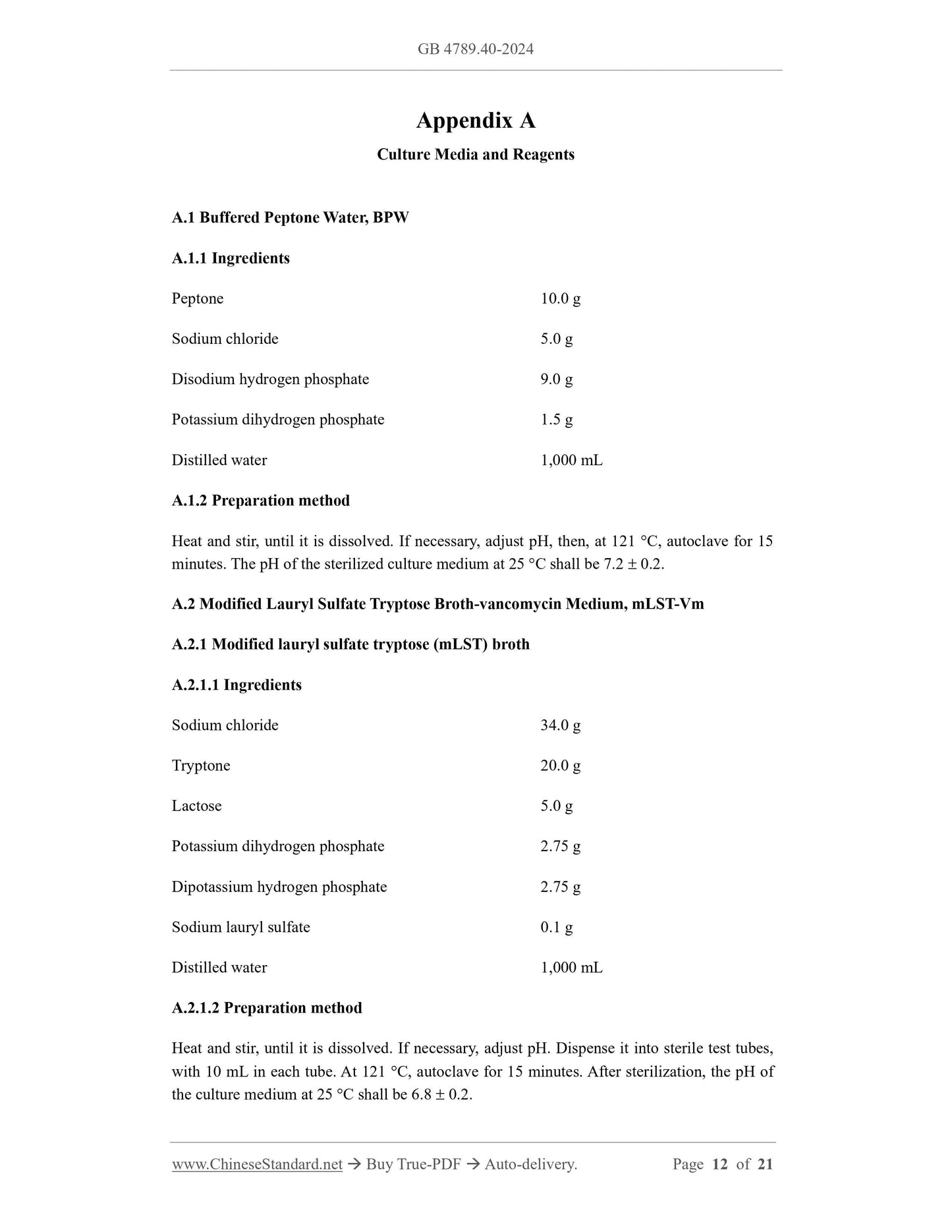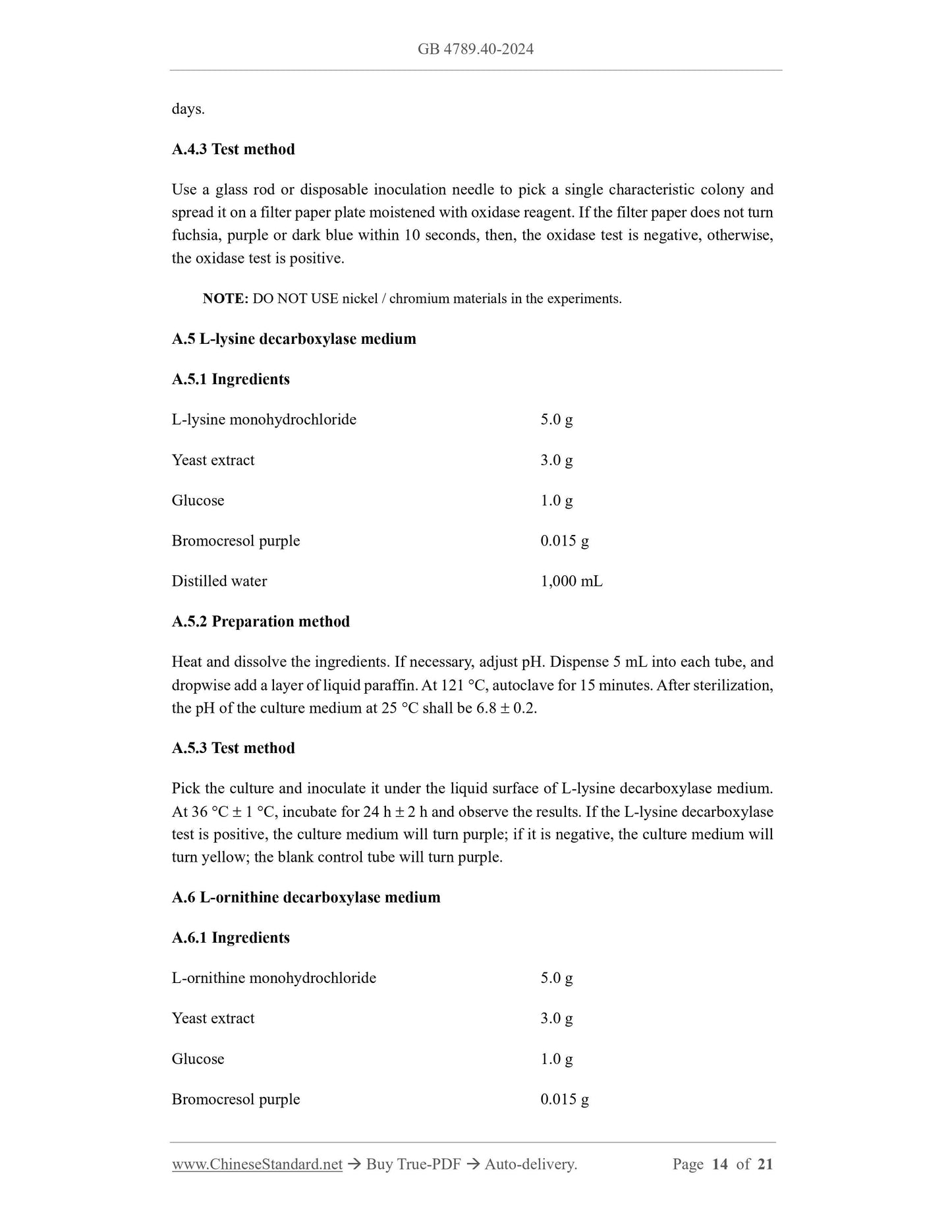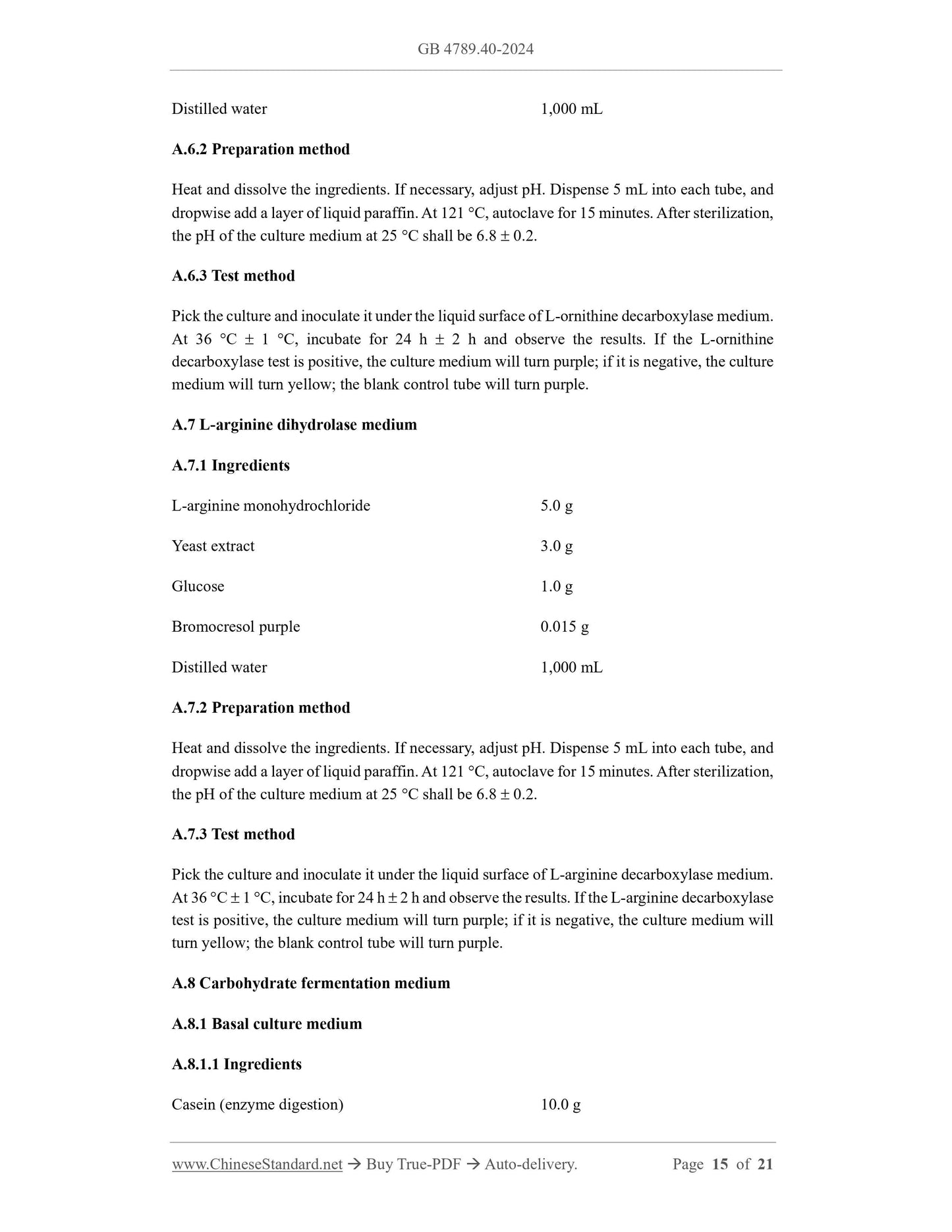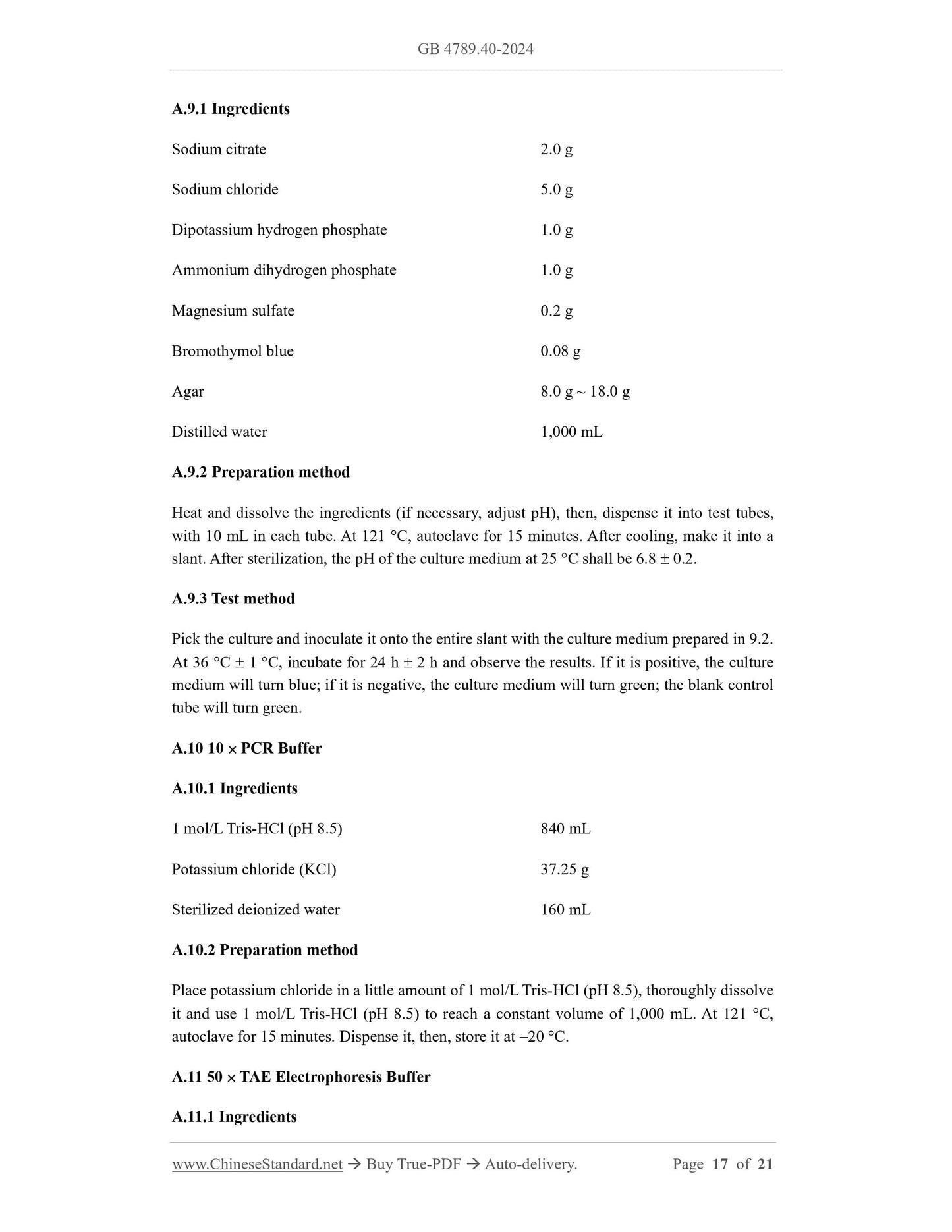1
/
of
9
www.ChineseStandard.us -- Field Test Asia Pte. Ltd.
GB 4789.40-2024 English PDF
GB 4789.40-2024 English PDF
Regular price
$260.00
Regular price
Sale price
$260.00
Unit price
/
per
Shipping calculated at checkout.
Couldn't load pickup availability
GB 4789.40-2024: National food safety standard - Food Microbiological Testing - Cronobacter Testing
Delivery: 9 seconds. Download (and Email) true-PDF + Invoice.Get Quotation: Click GB 4789.40-2024 (Self-service in 1-minute)
Newer / historical versions: GB 4789.40-2024
Preview True-PDF
Scope
This Standard specifies the examination method for Cronobacter spp. in food.This Standard is applicable to the examination of cronobacter in formula foods and
supplementary foods for infants and young children, milk and dairy products and their raw
materials.
Basic Data
| Standard ID | GB 4789.40-2024 (GB4789.40-2024) |
| Description (Translated English) | National food safety standard - Food Microbiological Testing - Cronobacter Testing |
| Sector / Industry | National Standard |
| Classification of Chinese Standard | X09 |
| Word Count Estimation | 16,194 |
| Date of Issue | 2/8/2024 |
| Issuing agency(ies) | National Health Commission of the People's Republic of China, State Administration for Market Regulation |
Share
